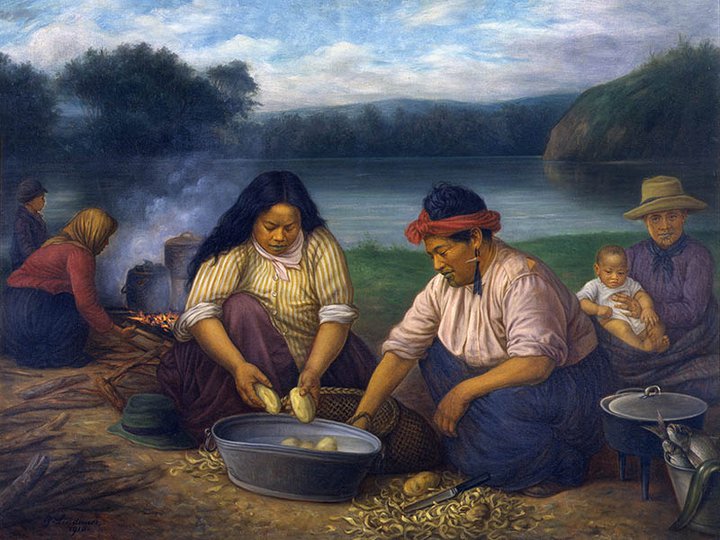Tama Ale Samoa • 4 June 2021
As he continues to unpick the Māori genesis story, Tama Ale Samoa explains the origins of Māori conceptions of hygiene.
 Māori women and children on riverbank, Gottfried Lindauer, via Te Papa
Māori women and children on riverbank, Gottfried Lindauer, via Te Papa
For a non-Māori speaker, it can be difficult to keep afloat when drifting deeper into the waters of the Māori world view. However, as we saw in our last segment, truly knowing something starts with knowing nothing, for light can only exist where there is darkness.
In a nutshell, the story of creation justifies our practices, customs and rituals, it gives them authenticity and mana. All our customs and rituals are drawn from the actions of the gods.
These Pūrākau Poto are simply unpicking the story of creation and revealing the many aspects of Te Ao Māori that are encoded within it. In our last segment we looked at the message that is found within the first paragraph of the creation story, and how it translated into a practice known as wānanga, when they were held, where they were held, the seating arrangement etc.
This week we look at the aspects encoded within the second verse of The Māori creation story:
In a deep embrace, Ranginui and Papatuanuku conceived and had many children, 77 in total according to my people of the Aotea waka, and they all lived in between their parents seemingly never-ending embrace. After some time, a lot of Ranginui and Papatuanuku’s children grew tired of the cramped, cold, wet and damp conditions they lived in and wished to be free of their parents’ embrace. After much discussion and debate the majority came to an agreement that they will separate their parents by force. One by one they tried, but to no avail.
This is the origin of hygiene. The children of Ranginui and Papatuanuku experienced bad living conditions, the exact words used in the narrative are cramped, cold, wet and damp, or te kōpā, te anu, te mākū, me te haukū. From that experience they learnt that an ideal or healthy living condition is warm, dry and has plenty of space. This part of the story is also said to be one of the reasons why water and dew (particularly the morning dew) are considered highly tapu or sacred to Māori.
This is where our understanding of hygiene started. Although there is a common misconception that Māori were an unhygienic race of savages, bathing and keeping good hygiene is an old tradition that Māori have followed since the beginning of time. I thank our gods for experiencing the ugly, giving us, their descendants, the knowledge of the beautiful.
As we unpick the story of creation, the given explanations are very much surface level, for their true meanings are very complex and some of the ideas and terminology does not exist in the English Language. However, let this act as bait, in the hope that some readers will find great interest and may investigate further into understanding the Māori world view. It is also important to know that this version of the story of creation is one of many, for every hapū have their own narratives, due to living in different environments. This version comes from my hapū of Tītahi, a sub-tribe of Ngāruahine Rangi, who belong to the South Taranaki district, and are descendants of the Aotea Waka.


